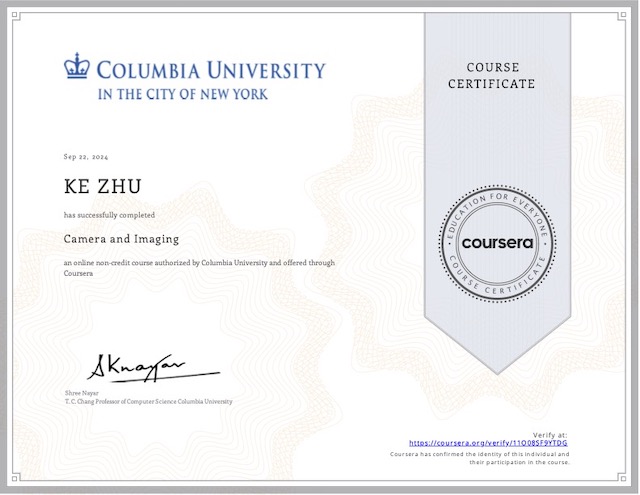Recall the hierarchy of money, the Fed is sort of at the top, it can create this high powered money called reserves. From the point of view of the banks, reserves are money. Fed funds are NOT either the liability or the asset of the Fed, they’re the asset and the liability of banks. Federal funds are credit, the inter-bank promises to pay money.
Federal fund’s market is an inter-bank borrowing market. They are borrowing reserves, which is the liabilities of the Fed. So the borrowing is the credit expansion on the base of the existing money that is on the balance sheet of the Fed.
Fed funds rate fluctuates cyclically, it contracts in the crisis. It has been near zero ever since 2009. The Fed used to use the Fed funds rate to try to manipulate the real economy – raise rates to try to slow the economy, and lower rates to try to speed it up. But now smack it against the zero bound, instead we now see quantitative easing, i.e. the fluctuation of the size of the balance sheet, not changing the price of reserves.
Also in the past, it used to be that there were not very many actual official reserves on the balance sheet of the Fed, but now there’s excess reserves which is not scarce anymore (many are used for payment system).
Fed Funds Market
The survival constraint says that cash inflows must be at least as large as cash outflows. The bank must settle with the Fed at the end of the day. It is important to understand the way in which the constrain does not actually bind during the day.
Overdraft happens when a bank say Bank_A, which does not have any reserves because it has already paid them out, needs to pay another bank say Bank_B. That is not a problem since Bank_A can run an overdraft, that is essentially a loan. What the Fed lends to Bank_A is reserves, and the Fed lends them by creating them out of thin air, and it credits them to the account of Bank_B.
| Bank A Debit | Credit | Fed Debit | Credit | Bank B Debit | Credit |
| +overdraft | +overdraft | +reserves | +reserves |
Bank_B knows nothing about this little arrangement, that Bank_A hasn’t in fact paid, it owes the Fed money. This is the credit grease that makes the payment system go during the day. At the end of the day, if Bank_A does not settle (clear the balance), the Fed will lend the money over night and charge a lot, much higher than the Fed funds rate. This will force Bank_A to find somebody to borrow money at a lower rate. So there’s a credit expansion (the elasticity part) during the day and then contraction (the discipline part) at the end of the day.
Because there are very large amounts of money are transacted, we need a Fed funds market to, to create a bilateral overnight borrowing, to substitute for the centralized overnight borrowing that that the Fed doesn’t want to do but would be forced to do.
Suppose Bank_A has an overdraft at the Fed, and Bank_B has a surplus at the Fed. They could find each other and they could do business.
| Bank A Debit | Credit | Fed Debit | Credit | Bank B Debit | Credit |
+reserves | +overdraft +fed funds | +overdraft -overdraft | +reserves -reserves | +reserves +fed funds -reserves |
Bank_A can borrow in the fed funds market. Bank_B can lend in the fed funds market. A Fed fund is typically a promise to pay reserves tomorrow morning. It means Bank_A, by promising to pay reserves tomorrow, gets reserves today. When Bank_B accepts this promise, it has to deliver reserves. Then Bank_A can use the reserves to pay back that overdraft.
These banks are in the Fed funds market all the time. More generally, if there weren’t these over drafts to begin with, this is the essence of a Fed funds transaction:
Bank_Bis giving up reserves today, in order to get a promise to receive fed funds tomorrow.Bank_Ais promising tomorrow in order to get reserves today.
| Bank A Debit | Credit | Fed Debit | Credit | Bank B Debit | Credit |
+reserves | +fed funds | +fed funds -reserves |
Bank_A could do this whole transaction before hand, not worry about overdrafts, then make a payment to Bank_B. Bank_A is going to pay Bank_B today by promising to pay Bank_B tomorrow.
| Bank A Debit | Credit | Fed Debit | Credit | Bank B Debit | Credit |
+reserves -reserves | +fed funds | +reserves_A -reserves_B -reserves_A +reserves_B | +fed funds -reserves +reserves |
This happens not only on the balance sheet of the Fed, but also on the balance sheet of a private clearinghouse called CHIPS – a mutual organization of a group of banks that are:
- collecting their due-to’s and due-from’s during the day, and
- settling them at the end of the day at Fed Wire.
So there’s two layers of credit expansion:
- the public one that’s on the balance sheet of the Fed, and
- the private one on the balance sheet of CHIPS.
| Bank A Debit | Credit | CHIPS Debit | Credit | Bank B Debit | Credit |
+due_to CHIPS | +collateral +due_from A | +deposits +due_to B | +overdraft +due_from CHIPS |
Every morning, member banks make deposits of collateral, so there is credit. Bank_A may have spent all its deposits, it can borrow from the clearing house during the day when it needs to make a payment to Bank_B. This is analogous to the Fed above. Ultimately, if Bank_A is unable to fulfill on this payment, all the members of chips are supposed to pay Bank_B. The whole point of this, is that Bank_B no longer has an obligation from Bank_A, it has an obligation from the clearing house CHIPS.
A relevant inter-bank market is the Eurodollar market. There are lots of foreign banks that are members of it, and they can borrow and lend to each other in the Eurodollar market.
Payment Imbalances
However credit doesn’t shrink, it just moves off balance sheet of Fed or CHIPS, but moves onto the balance sheet of the individual bilateral borrowers and lenders, and dealers. The Fed and CHIPS are protecting themselves not going to extend their balance sheet overnight. If there’s payment imbalances in the system you’re going to see them as an expansion of Fed funds credit. These are symptoms of daily imbalances that couldn’t be cleared. Maybe it gets bigger and bigger and bigger, so people are watching these balances. These balances are highly sensitive measures of the payment patterns in the economy.
- If there any imbalances in payment flows, that are causing the Fed funds market to expand, and that is going to drive up interest rates and the Fed is going to miss its interest rate target.
- If there are imbalances that are causing in the other direction, that’s going to drive and the Fed is going to miss its interest rate target, too.
The Fed is not actually a participant in the Fed funds market, the Fed funds rate is a market rate. The Fed influences the rate by manipulating the quantity of reserves in the economy as a whole, and by entering in other markets in particular in the Repo market.
The Fed changes the quantity of reserves out there in order to indirectly influence the Fed funds rate. It achieves the goal by making over night loans called Repurchase Agreement Loan.
| Security Dealer Debit | Credit | Fed Debit | Credit |
| +reserves | +RP loan | +RP loan | +reserves |
Overnight Repurchase Agreement Loan creates additional reserves. Parties that are borrowing from the Fed, are getting additional reserves. These reserves can be lent in the Fed funds market. That can make more funds available and put down more pressure on the daily Fed funds rate. Fed Funds Effective is the average of the Fed funds rate during the day.
Secured vs. Unsecured Interbank Credit
Fed funds are unsecured overnight loans. There’s no collateral. Similarly, the Eurodollar market is unsecured inter-bank loans. However banks are paying very close attention to how their exposure to particular counter parties. Banks have a diversified portfolio of Fed funds loans.
Repurchase Agreements are secured loans. There is collateral, there is treasury bills.
My Certificate
For more on Federal Funds and Final Settlement, please refer to the wonderful course here https://www.coursera.org/learn/money-banking
Related Quick Recap
I am Kesler Zhu, thank you for visiting my website. Check out more course reviews at https://KZHU.ai



